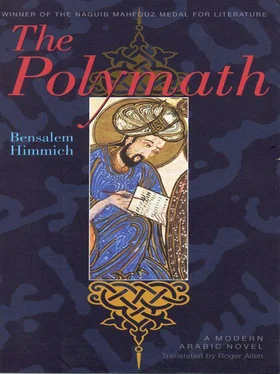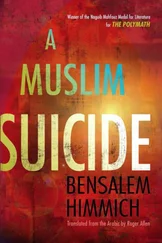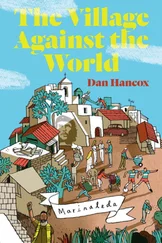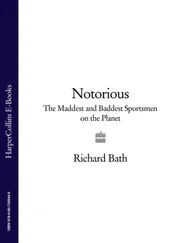mosques of al-Azhar and al-Husayn:These are two of the most famous shrines in the old city of Cairo. Al-Azhar was built for the SHI’ITE FATIMI dynasty in the tenth century A.D. The mosque of al-Husayn (Muhammad’s grandson), situated across a square from al-Azhar itself, is one of the holiest shrines in Islam and is believed to house al-Husayn’s relics.
Mu‘allaqat :the renowned collection of the longest odes (collected in groups of seven or ten) from the tradition of pre-Islamic poetry. They were collected during the early period of Islam and have since then served as the major yardstick for Arab poetic achievement.
Mu’awiya ibn Abi Sufyan (d. 60/680):the first caliph of the Umawi dynasty (41–132/660–750), that assumed the caliphate following the Battle of Siffin and established Damascus as their center of authority.
Muhammad ibn Ibrahim al-Abili:IBN KHALDUN’S revered teacher in Tunis, an authority on philosophy and metaphysics.
Muhammad V and Lisan al-Din ibn al-Khatib:Muhammad ibn al-Ahmar (d. 793/1391) was one the rulers of GRANADA, a member of the Nasrid dynasty. Lisan al-Din ibn al-Khatib (d. 776/1374), one of the most famous literary figures of his age, served as his chief minister.
al-Mutanabbi (d. 354/965), al-Ma‘arri (d. 449/1058):two of the most famous poets in the Arabic literary heritage.
Mu‘tazili doctrine:the rationalist movement, questioning principle of predestination and the uncreatedness of the Qur’an, that became official belief during the caliphate of al-Ma’mun (d, 218/833).
The Path to Eloquence (Nahj al-balagha), The Epistle of Qushayri (Risalat al-Qushayri), Sufi Categories (al-Tabaqat al-sufiyya) :the names of three significant works concerning Islamic beliefs: the first is by al-Sharif al-Radi (d. 406/1016) and contains texts attributed to ‘Ali, the cousin of Muhammad and fourth caliph; the second is a treatise on Sufi beliefs by al-Qushayri (d. 465/1074); and the third is a categorization of Sufis compiled by Muhammad ibn al-Husayn Sulami (d. 412/1021).
Pedro Alfonso (d. 770/1369):often known as ‘Pedro the Cruel,’ he was king of Seville. It was in 765/1364 that Muhammad the Fifth of GRANADA and his minister, Ibn al-Khatib, sent IBN KHALDUN to parley with the king.
The Prevalent Model (al-Mathal al-sa’ir) by Diya’ al-Din ibn al-Athir (d. 637/1239):this is a famous literary compendium, in which the qualities of both poetry and prose are considered side by side.
Qala’un:the fifth of the Bahri line of MAMLUK sultans, he ruled from 678–689/1279–1290.
al-Qamhiya College:founded by SALAH AL-DIN (Saladin), it was the college to which SULTAN BARQUQ appointed IBN KHALDUN as teacher of MALIKI law in 786/1384.
Qayrawan:one of the most important garrison cities (amsar) that were built as part of the Islamic expansion across North Africa to the west in the seventh and eighth centuries. The city (in central Tunisia) is still famous for its superb mosque.
Qubbat Yalbugha: a small shrine to the south of the city of Damascus constructed by Yalbugha al-Yahyawi in 746/1345.
Rigraga:the river in Morocco that flows into the Atlantic between the cities of Sale to the north and Rabat to the south.
Riyah tribes:a powerful group of tribes descended from the Banu Hilal whose emigration from Arabia to North Africa is the subject of the famous Banu Hilal popular narrative saga. In IBN KHALDUN’S time, they were centered around the city of Constantine (in contemporary Algeria).
Salah al-Din (Saladin), the Ayyubi, and Ya‘qub al-Mansur, the Almohad:at the time of the Crusaders’ siege of ‘Akka (Acre) in 585/1189, Salah al-Din sent a letter to the Almohad sultan, Ya‘qub ibn Mansur (d. 595/1199), requesting the support of his fleet. At first, the request was refused, but later Ya‘qub did dispatch some vessels to support him. Salah al-Din was also the founder of the Citadel in Cairo.
Salihiya College:the college on BAYN AL-QASRAYN from which IBN KHALDUN operated as chief judge of the MALIKI school of law in Cairo.
Sarghitmishiya College:this college had been founded as a religious endowment (waqf) by Amir Sayf al-Din Sarghatmish.
Sayyida Zaynab:a mosque-shrine in the southern part of the old city of Cairo named for Zaynab, the granddaughter of Muhammad and sister of al-Husayn.
Shah Malik:one of the leading Mongol amirs, he was appointed viceroy of Damascus by Timur.
Sudun:Amir Sudun al-Shaykhuni was supervisor of the BAYBARS CONVENT and did not sign the fatwa approving the deposition of SULTAN BARQUQ, something that IBN KHALDUN reluctantly did. Thus, when BARQUQ was restored to power in 792/1390, Sudun was appointed viceroy in Egypt. IBN KHALDUN’S dismissal from his position at the BAYBARS CONVENT followed soon afterward.
Sultan ‘Abd al-‘Aziz:Marini sultan in Fez (d. 774/1372).
Sultan Abu al-‘Abbas:a member of the Hafsi (Banu Hafs) dynasty in Tunis, he was responsible for the restoration of the dynasty to power after the invasion of the Marini dynasty of Fez (748–750/1347–49). He ruled from 748/1370 to 772/1394.
Sultan Abu al-Hasan:father of SULTAN ABU ‘INAN, Abu al-Hasan ruled as the Marini sultan in Fez from 731/1331 to 752/1351. A disastrous naval expedition was primarily responsible for his downfall at the hands of his own son.
Sultan Abu ‘Inan:Marini sultan in Fez from 752/1351 to 759/1357, he assumed power after deposing his father, ABU AL-HASAN. Abu ‘Inan gave the young IBN KHALDUN a court position as secretary in 757/1355, but later imprisoned him when he supported the attempt by ABU ‘ABDALLAH, the amir of Bijaya (Bougie), to regain his kingdom (759–760/1357–58).
Sultan Abu Salim:Marini ruler in Fez from 760/1358 to 762/1360. He appointed IBN KHALDUN as al-nazir fi al-mazalim (‘examiner of grievances’).
Sultan Barquq:al-Malik al-Zahir Abu Sa’id Barquq (784–801/1382–99), the Circassian Mamluk sultan who often sought IBN KHALDUN’S advice and appointed him to several important positions as both teacher and judge.
Sultan al-Muzaffar Hajji, murder of:a reference to the political turmoil in 783–784/1381–82 that accompanied the removal of the last of the Bahri line of MAMLUKS and their replacement by SULTAN BARQUQ, the founder of the Burji line.
al-Tabari (d. 314/923):the most famous of the annalist-historians in the early Islamic period. His monumental history, Tarikh al-rusul wa-l-muluk (‘History of Messengers and Kings’) has been translated into English.
Tamazight:the preferred term for the indigenous North African language often known as Berber (a term that, like the analogous ‘Barbarian,’ is regarded as an insult by its speakers).
Tanam:also known as Tanbak al-Hasani al-Zahiri, he was viceroy of Damascus. SULTAN BARQUQ’S will stipulated that AYTAMISH be appointed guardian to the young Sultan Faraj, but Tanam managed to engineer a meeting of a council at which this provision was overturned. AYTAMISH refused to accept the decision, and a period of conflict ensued.
Taqi al-Din ibn Taymiya (d. 728/1328):a renowned Hanbali the ologian who was doggedly opposed to forces of innovation within Islam. Throughout his life, his beliefs caused him continuous problems with the judicial and political authorities, and he spent many periods in prison. His influence on Muslim orthodoxy has — been enormous and long-lasting.
Читать дальше












